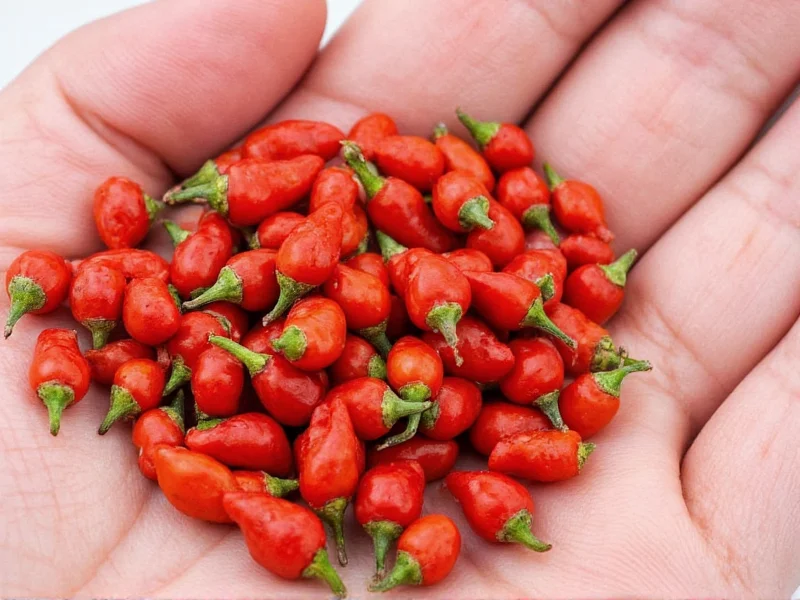Aleppo pepper, a staple in Middle Eastern cuisine, has gained global popularity for its distinctive flavor profile that balances mild heat with complex fruitiness. Understanding what Aleppo pepper is similar to helps home cooks and professional chefs alike maintain recipe integrity when this specialty spice isn't available. This guide provides accurate substitution information based on flavor chemistry, heat levels, and culinary applications.
What Exactly Is Aleppo Pepper?
Originating from Syria and Turkey, Aleppo pepper (Halaby pepper) comes from the Capsicum annuum plant. Unlike many chili peppers, it undergoes a unique curing process: ripe peppers are semi-dried, soaked in olive oil and salt, then coarsely ground. This process creates its signature brick-red color, moderate heat level (10,000–30,000 Scoville Heat Units), and complex flavor profile featuring:
- Fruity undertones reminiscent of sun-dried tomatoes
- Subtle tanginess from the curing process
- Earthy, slightly floral notes
- Moderate heat that builds gradually
Why Finding the Right Substitute Matters
Using an inappropriate substitute can dramatically alter your dish's flavor balance. Many cooks mistakenly reach for cayenne pepper alone, which provides heat but lacks Aleppo's nuanced fruitiness. The ideal substitute maintains both the heat level and flavor complexity that makes Aleppo pepper special in dishes like muhammara, fattoush, or roasted vegetable preparations.
Top Aleppo Pepper Substitutes Compared
When searching for what is Aleppo pepper similar to, consider these alternatives based on flavor chemistry and culinary performance:
| Substitute | Heat Level (SHU) | Flavor Profile | Best For | Substitution Ratio |
|---|---|---|---|---|
| Urfa Biber | 20,000–30,000 | Smoky, raisin-like, slightly fermented | Meat rubs, stews, bean dishes | 1:1 |
| Sweet Paprika + Cayenne | 15,000–25,000 | Balanced sweet-heat, mild fruitiness | Most versatile applications | 1.5 tsp paprika + ¼ tsp cayenne per 1 tsp Aleppo |
| Ancho Chili Powder | 1,000–2,000 | Deep, raisin-like, mild heat | Sauces, braises, chocolate dishes | 2:1 (use more for equivalent heat) |
| Crushed Red Pepper Flakes | 15,000–25,000 | Sharp, one-dimensional heat | Pizza, pasta, quick applications | ¾:1 (reduce quantity) |
| Pimentón de la Vera (Dulce) | 1,000–2,000 | Smoky-sweet, complex | Spanish dishes, marinades | 1.5:1 + pinch cayenne |
Detailed Substitute Analysis
Urfa Biber: The Closest Single-Ingredient Alternative
Often called "Turkish black gold," Urfa biber shares Aleppo pepper's moderate heat level but offers a distinctly smoky, almost raisin-like flavor due to its unique sun-drying and smoking process. When considering what spice is closest to Aleppo pepper, Urfa biber stands out as the single-ingredient substitute that most closely matches both heat and complexity. Use it in equal amounts for meat dishes, bean stews, or as a finishing spice.
Sweet Paprika and Cayenne Blend: The Most Accessible Option
For cooks wondering how to replace Aleppo pepper in cooking with pantry staples, a blend of sweet paprika and cayenne provides the most balanced alternative. The paprika contributes fruitiness while the cayenne adds necessary heat. This combination works particularly well in what is Aleppo pepper similar to applications requiring both flavor depth and moderate spiciness, such as roasted vegetable dishes or tomato-based sauces.
Ancho Chili Powder: For Mild Heat Applications
Ancho powder, made from dried poblano peppers, offers rich fruitiness with significantly less heat. When substituting in dishes where Aleppo's heat isn't essential—like chocolate mole or certain vegetable dishes—ancho provides complementary flavor notes. Remember that you'll need to use more ancho to achieve similar flavor impact, and consider adding a pinch of cayenne if heat matters.
Crushed Red Pepper Flakes: The Common Mistake
Many home cooks reach for red pepper flakes when they need an Aleppo pepper substitute for recipes, but this creates an unbalanced result. Standard red pepper flakes lack Aleppo's fruitiness and deliver sharper, more aggressive heat. If using this substitute, reduce the quantity by 25% and consider adding a pinch of smoked paprika to approximate Aleppo's complexity.
Practical Substitution Guidelines
When determining what is Aleppo pepper similar to for your specific recipe, consider these factors:
- Dry rubs and finishing spices: Urfa biber works best as a 1:1 substitute
- Tomato-based sauces: Use paprika-cayenne blend (1.5:0.25 ratio)
- Marinades: Add a teaspoon of pomegranate molasses to Urfa biber for authentic flavor
- Baking applications: Ancho powder provides better flavor balance than heat-focused substitutes
Always add substitute spices gradually, tasting as you go. Aleppo pepper's moderate heat builds slowly, unlike the immediate punch of cayenne or red pepper flakes. For best results in what spice is closest to Aleppo pepper applications, consider blooming your substitute in olive oil first to release flavor compounds.
Preserving Authentic Flavor in Key Dishes
Certain Middle Eastern specialties rely heavily on Aleppo's unique profile. When making muhammara (red pepper dip), combine smoked paprika with a touch of sumac for the characteristic tang. For manakish (flatbread), use Urfa biber with a hint of toasted cumin. Understanding what is Aleppo pepper similar to in context-specific applications ensures your dishes maintain authentic character even without the original ingredient.











 浙公网安备
33010002000092号
浙公网安备
33010002000092号 浙B2-20120091-4
浙B2-20120091-4